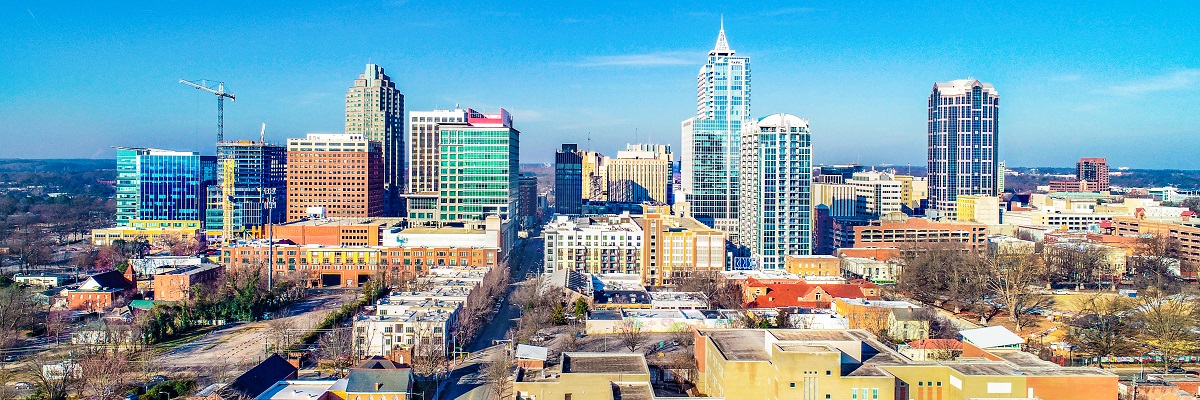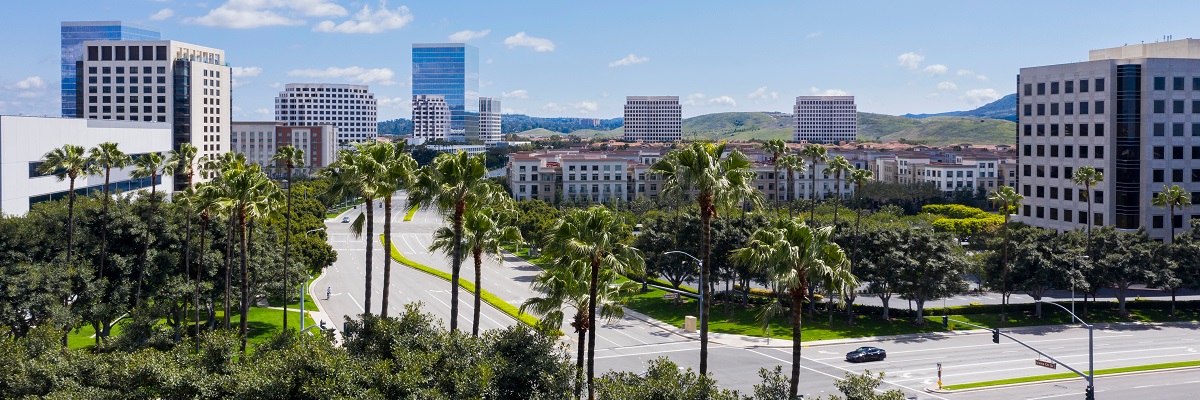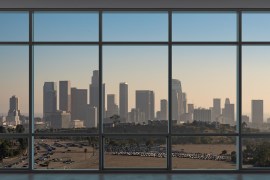CoworkingCafe ranked some of the largest U.S. cities by their capacity to foster a healthy work/life balance for their working populations based on economic, cultural, and infrastructural factors, as well as their psychological influence.
- Midsized Midwestern cities dominated the top for work/life balance and mental health with Minneapolis, MN; Madison, WI; and Lincoln, NE leading the way.
- Raleigh, NC ranked fourth-best for work/life balance joined by six other Southeastern cities in the top 20.
- Coastal and Southern hubs fell behind in most aspects that contribute to overall work/life balance.
- Irvine, CA stood out as a haven for good mental health and work/life balance within the greater Los Angeles area and the Golden State as a whole.
- Pittsburgh, PA was the only Northeastern city with a strong overall foundation for work/life balance, whereas Buffalo, NY, scored high for mental health metrics.
It’s become less of a debate and more of a fact recently that having a good work/life balance is one of the pillars of mental health and sustainable productivity, not only among individuals, but among companies — and even the federal government. According to Bank of America’s 2022 Workplace Benefits Report, employees agreed that mental and physical health outweighed even salary when evaluating their overall wellbeing — concluding that burnout and poor work/life balance were among the top reasons for resignations amidst the growing trend often referred to as the Great Resignation or the Big Quit.
But balancing work and life differs from person to person as much as it differs from place to place. With that in mind, we set out to find the top cities in the country that offered the best foundations for a healthy work/life balance.
Specifically, we looked at 100 cities with at least 200,000 residents and assigned scores based on mental health metrics, such as the amount of green space and recreational amenities; air quality; and, of course, work hours. We also scored the cities based on income, affordability, remote working prevalence, commute times and how many residents had health insurance. We then combined and weighted these scores to create an overall work/life balance index with a heavy focus on mental health.
Midsize Midwestern Cities Clear Leaders for Work/Life Balance
While the coastal and Southern office and industrial hubs tend to get most of the attention when it comes to jobs, the Midwest definitely takes the lead when it comes to work/life balance and mental health. Seven Midwestern cities landed in our top 10, although the Southeast was also well-represented among the best cities for work/life balance with two entries in the top 10 and five more in the top 20.
- Check out the full, interactive table
See all 100 entries in one place and sort them by the different metrics by clicking on the column headers. - Jump to the methodology section
Learn more about the calculation processes and the data points used for each metric.
Minneapolis, MN took 1st place — not because of an outstanding performance in any of the individual metrics, but rather due to the city’s consistently strong rankings across the board. Talk about balance, right? Still, it’s fair to say that Minneapolis excelled when it came to fostering mental health with the average work week coming in just below 38 hours. That’s about an hour less than the average large city and almost four hours less than some of the worst-performing cities on the list. Minneapolis also had one of the highest coverages of health insurance with 94% of the population having either private or public health insurance.
Although its $70,099 median household income was just slightly above the average for similar-sized cities, the favorable cost of living earned Minneapolis a place among the most affordable large cities. Plus, with 16% of the working population in remote jobs, it was ahead of most big cities in terms of flexible work. Similarly, the commute time was also two minutes less than the average.
 Madison, WI followed in 2nd place overall having aced the mental health score, thanks to the shortest average work week at 36.6 hours. Likewise, its 96% coverage for health insurance was a top-five position on its own, while the density of recreational amenities was also exactly twice the average of the cities included in the analysis.
Madison, WI followed in 2nd place overall having aced the mental health score, thanks to the shortest average work week at 36.6 hours. Likewise, its 96% coverage for health insurance was a top-five position on its own, while the density of recreational amenities was also exactly twice the average of the cities included in the analysis.
The Wisconsin capital also ranked in the top 10 by commute score with a 19.6-minute average commute time. And, it was in the top third when ranked by affordability and remote work, too.
Lincoln, NE also secured a spot on the podium with outstanding placements for mental health, affordability and commute. Notably, Lincoln had the fourth-best air quality among the largest cities. But, with just over 37 hours worked per week, on average, and plenty of sports courts and gyms, Lincoln also landed several top-10 ranks for the individual metrics. And, while the median income was nearly $8,000 less than what Minneapolis or Madison households took home, the lower prices also gave Lincoln salaries the 11th-strongest buying power overall.
Further down the list were four more Midwestern cities in the top 10: Des Moines, IA followed a similar score distribution to Lincoln’s pattern, and St. Paul, MN stood out as the second-best city overall for mental health. At the same time, Columbus, OH and Omaha, NE hammered home the Midwestern dominance. Omaha owed its placement in the top 10 mostly to a highly favorable income-to-costs ratio on top of its short, 19.3-minute average commute time. Finally, while Columbus also ranked consistently above average for all work/life balance metrics, it’s worth noting that it’s also the largest city in the top 20, by far, with just shy of 900,000 residents.
7 Southeastern Cities in Top 20: Raleigh Just Misses Podium
 The Southeast was also well-represented with Raleigh, NC taking 4th place due to the exceptionally good buying power of its Research Triangle wages. Specifically, the $72,996 median annual income —coupled with a relatively low cost of living — made Raleigh the fourth-most affordable large city. The stats also showed that 17% of local employees worked remotely — the highest share of the cities discussed thus far. Speaking of the Triangle, Durham, NC ranked 23rd overall. It was held back by a slightly lower — but still high — level of health insurance coverage (88%) and a higher number of work hours compared to higher-scoring cities, with just shy of 40 hours per week.
The Southeast was also well-represented with Raleigh, NC taking 4th place due to the exceptionally good buying power of its Research Triangle wages. Specifically, the $72,996 median annual income —coupled with a relatively low cost of living — made Raleigh the fourth-most affordable large city. The stats also showed that 17% of local employees worked remotely — the highest share of the cities discussed thus far. Speaking of the Triangle, Durham, NC ranked 23rd overall. It was held back by a slightly lower — but still high — level of health insurance coverage (88%) and a higher number of work hours compared to higher-scoring cities, with just shy of 40 hours per week.
Chesapeake, VA rounded out the top 10 with the best affordability score, thanks to the $85,563 median annual household income — the highest among the top 20 East Coast markets. What’s more, Chesapeake also boasted a whopping 234 acres of green spaces per 1,000 residents, second only to Anchorage, AK (hardly a fair comparison). The rich forests — not to mention the Great Dismal Swamp — also help keep atmospheric pollution in check here, making the Chesapeake air the fifth-cleanest among the analyzed cities.
Neighboring Virginia Beach, VA, was 16th overall in a tie with Greensboro, NC. In this case, Virginia Beach was hot on Chesapeake’s heels in terms of affordability, taking second place with an $81,810 median household income. Meanwhile, Greensboro’s strength was in its mental health indicators, with less than 38 hours worked per week, on average, as well as the seventh-highest air quality.
West Coast Underrepresented Among Top Cities for Work/Life Balance
 Although the Midwestern and Southeastern cities stole the West Coast’s thunder, Irvine, CA and Portland, OR stood out in the overall ranking at 9th and 13th places, respectively.
Although the Midwestern and Southeastern cities stole the West Coast’s thunder, Irvine, CA and Portland, OR stood out in the overall ranking at 9th and 13th places, respectively.
Irvine’s placement in the top 10 was particularly impressive given that all other cities in the greater Los Angeles area were in the lower third of the list, apart from Riverside, CA, ranked 43rd. Irvine took 8th place in the individual rankings for mental health with the third-highest concentration of recreational amenities and 96% health insurance coverage. Surrounded by some of the most desirable hiking and mountain biking destinations in the LA area, the city also boasted one of the highest shares of green spaces per capita. And, remote employees accounting for 18% of the local workforce also helped land Irvine in 8th place for flexible working, as well.
Further north — and despite being less affordable — working from home was widely adopted (18%) in Portland and the average work hours were also manageable. Additionally, the wide health insurance coverage (94%) and exceptional air quality secured its place among the best cities for work/life balance. The Pacific Northwest city actually finished just a hair above Henderson, NV — the only non-coastal Western market on the list.
Scottsdale & Albuquerque Represent Entire Southwest
 Looking at the Southwestern region, Scottsdale, AZ missed the top 10 by a hair’s breadth. Although its 40-hour average work week and poor air quality pushed it all the way to the lower third of the list by mental health score, Scottsdale was actually the most progressive city in terms of the adoption of flexible work: a striking 22% of the labor force here worked from home. Moreover, the $97,409 median household income gave Scottsdale a top 10 placement for affordability, and the 21.6-minute commute was also good news for the ever-contracting pool of commuters.
Looking at the Southwestern region, Scottsdale, AZ missed the top 10 by a hair’s breadth. Although its 40-hour average work week and poor air quality pushed it all the way to the lower third of the list by mental health score, Scottsdale was actually the most progressive city in terms of the adoption of flexible work: a striking 22% of the labor force here worked from home. Moreover, the $97,409 median household income gave Scottsdale a top 10 placement for affordability, and the 21.6-minute commute was also good news for the ever-contracting pool of commuters.
Albuquerque, NM was the only other Southwestern market in the top 20 best cities for work/life balance with consistently strong scores in all aspects. In fact, the Duke City’s weakest point seemed to be remote work, where it scored slightly below average with only a 9% adoption rate of flexible working arrangements.
Large, Northeastern Cities Least Favorable for Work/Life Balance
 Pittsburgh, PA was the sole representative of the Northeastern United States, at the tail end of the top 20. It benefitted, in large part, from the abundant recreational amenities and strong, 95% health insurance coverage among the city’s residents. Though to a lesser degree, Pittsburgh was also supported by its reasonable work hours. Nevertheless, it shared 20th place with Louisville, KY, which, despite falling behind when it came to remote work and stress-relief features, was actually much more affordable than Pittsburgh (with a shorter commute time, too).
Pittsburgh, PA was the sole representative of the Northeastern United States, at the tail end of the top 20. It benefitted, in large part, from the abundant recreational amenities and strong, 95% health insurance coverage among the city’s residents. Though to a lesser degree, Pittsburgh was also supported by its reasonable work hours. Nevertheless, it shared 20th place with Louisville, KY, which, despite falling behind when it came to remote work and stress-relief features, was actually much more affordable than Pittsburgh (with a shorter commute time, too).
Buffalo, NY was the only notable exception with some of the lowest weekly work hours and highest health insurance coverage nationally (96%), thereby earning it fifth place for mental health. The 19.9-minute average commute, decent air quality and plentiful free-time activity options also add to Buffalo’s appeal. The 5% remote work ratio and $42,186 median household income, however, pushed Buffalo back to rank 31 among the best cities for work/life balance.
Improving Work/Life Balance Is a Common Goal
Work/life balance isn’t just about a flexible schedule and the ability to telecommute. Competitive compensation, healthy working conditions, opportunities for professional growth, social connections, and a balanced and employee-friendly PTO schedule all tie into the mental health narrative.
Accordingly, forward-thinking leaders are creating workplace environments where employees can get the most out of their work hours, while still finding time to live their lives to the fullest. Furthermore, in addition to promoting flexible work schedules and the ability to work from home or from a coworking space of the employee’s choice, many companies are also adopting a range of sponsored wellness programs and initiatives to meet the mental health needs of their workers.
After all, when employees are happy in their roles, work feels less like a chore and more like an integral part of their everyday lives — a mutually beneficial outcome worth pursuing for all parties.
Methodology
- CoworkingCafe focused on U.S. cities with at least 200,000 residents that had data for all metrics analyzed.
- The total score was calculated using the following data points and weighting:
- Mental health – 40% of the total index
-
- - Average work hours per week – includes part-time and full-time positions [U.S. Census Bureau – 5-year estimates (2021)] – 40%
- - Green spaces in acres per 1,000 residents [The Trust for Public Land’s public database (2021)] – 20%
- - Number of recreational amenities per 10,000 residents [The Trust for Public Land’s public database (2021)] – 20%
- - Percentage of population with public or private health insurance coverage [U.S. Census Bureau – 5-year estimates (2021)] – 10%
- - Air Quality Index [U.S. Environmental Protection Agency (2021)] – 10%
-
- Affordability – 30% of the total index
-
- - Median annual household income [U.S. Census Bureau – 5-year estimates (2021)]
- - Cost of Living Index [The Council for Community and Economic Research (2022)]
-
- Remote work – 20% of the total index
-
- - Share of remote workers out of the total working population [U.S. Census Bureau – 5-year estimates (2021)]
-
- Commute time – 10% of the total index
-
- - Mean travel time to work in minutes [U.S. Census Bureau – 5-year estimates (2021)]
-
- Mental health – 40% of the total index
- The scores used to compare cities were inversely proportional to their ranks obtained for all data points, assigned in increments of one point/rank (1st place = 100 points; 2nd place = 99 points; etc.).
- The air quality index reflected that of the wider metro area when city-level data was not available.
Fair Use & Redistribution
We encourage and freely grant you permission to reuse, host or repost the images in this article. When doing so, we only ask that you kindly attribute the authors by linking to CoworkingCafe.com or this page so that your readers can learn more about this project, the research behind it and its methodology.







